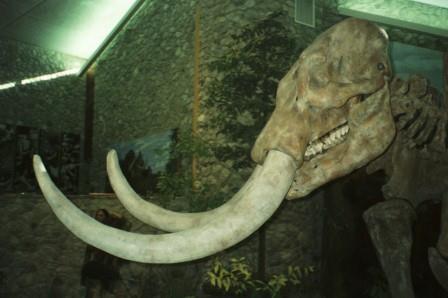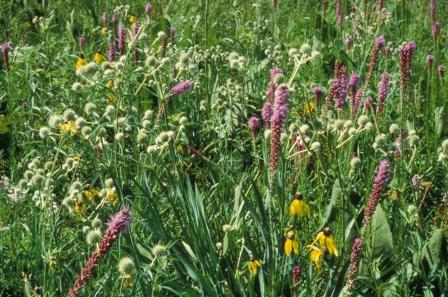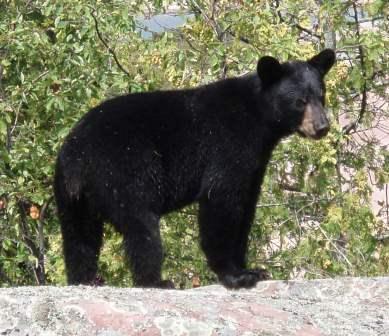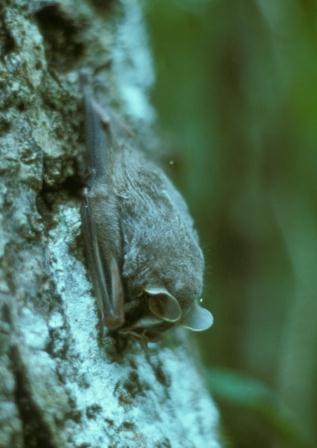by Carl Strang
This year’s winter series is a review of the prehistoric life and geologic history of northeast Illinois. Each chapter will summarize current understanding, gleaned from the literature, of what was going on with life on Earth in a particular span of time, what we know about the local landscape, and what we can say about local life. I include some references, particularly to papers published in the journal Science which commonly is available at public libraries. Contact me if you need sources for other items. The Earth is so old that every imaginable environment was here at some point, from ocean depths to mountaintops, from equatorial tropics to tundra, and from wetlands to desert.
Pliocene Epoch (5.2-1.64 million years ago)
The Pliocene Epoch, literally “more recent,” originally was defined (1833) by the percentage of then known fossil mollusk species still living (35-95%). Its end is marked by the beginning of the glacial times.
Life on Earth. In the Pliocene, grazers became largely supplanted by more generalist herbivores as savannas became widespread in Eurasia and North America. The dominant groups were camels, antilocaprids (e.g., pronghorn “antelope”), and Equus horses (which, like most horses, originated in North America). Opossums diversified in South America, mammoths appeared in Africa (early Pliocene), the North American rhinoceroses vanished (middle Pliocene), and Sorex shrews appeared in the late Pliocene.

Sorex shrews like our short-tailed shrew of today made their evolutionary appearance in the Pliocene Epoch.
Land bridges finally allowed camels to spread into South America and Asia in the Pliocene (a camel survived in North America into late Pleistocene times). In the middle Pliocene, continued connection to Asia brought immigration of more carnivores, deer, and the elephant Stegomastodon. From North America to Eurasia went a rabbit, a squirrel, the beaver, and Equus.

The world’s lynx and cheetahs first appeared in North America, crossing to the Old World via the Bering Sea land connection.
In the late Pliocene, new appearances were pocket gophers, the white-tailed deer genus Odocoileus, raccoons, the giant beaver, bobcat (Old World lynxes, and also cheetahs, trace their ancestry to the New World where their groups first appeared), the New World porcupine family, eastern mole, and masked shrew.
In the meantime, the first hominids were beginning to walk upright in Africa 3.8-4 mya (million years ago; Science 307:1545). Upright walking may have begun in the trees, as a hand-assisted way of negotiating thin, flexible branches (Science 316:1328 ). “Lucy,” Australopithecus afarensis (3-3.6my ago), regarded as a human ancestor or close to it, has been tied to the older A. anamensis (4mya), which in turn may have come from the still older Ardipithecus ramidus (4.4mya). Fossils of all three species were found in the same African river valley (Science 312:178). Ardipithecus significantly was a woodland dweller; apparently upright walking was not a product of a grassland habitat (Science 326: 64). Genus Homo had evolved by the late Pliocene, with species from Africa to Asia. Homo habilis and H. erectus are two earlier species which apparently overlapped considerably in time, so that it is uncertain whether the latter descended from the former (Science 317:733). Examination of limb structure points to habilis being arboreal while erectus was terrestrial, so a connection by descent is unlikely (Science 320:609).
Birds also were dispersing, and our modern species began to emerge. At least some modern songbirds had evolved by the early Pliocene (Auk 124:85). The chickadees and titmice, which had appeared in Eurasia originally, came over to North America in the Pliocene. The first crested species (titmouse) came over around 4 mya, and a single non-crested (chickadee) founder species around 3.5 mya. Subsequent evolution led to the 3 modern titmouse species and about 7 chickadees in the Americas. One terror bird species, in genus Titanis, reached North America from South America 2-3 million years ago, but was extinct by the end of the Pliocene.
Local landscape. Cooling and increased seasonality continued in the Pliocene (the middle Pliocene was the last time that Earth temperatures were warmer than at present). Climate in the early Pliocene was significantly warmer than today; the major difference apparently was that the El Niño pattern of Pacific Ocean currents was permanent rather than episodic as it is today. The re-establishment of such a pattern is a possible outcome of global warming (Science 312:1485). Woodlands were more open in the Pliocene, perhaps savanna-like in places in our area. Elsewhere in North America, the continent developed its first near-modern boreal forest, as well as the first deserts, tundra and permafrost areas.

The Pliocene brought increasing seasonality, and extensive savannas replaced much of the Miocene grasslands.
The nearest Pliocene deposits are tiny areas in southern Indiana, and extensive areas in eastern Nebraska. By the Pliocene, much of northeast Illinois was draining eastward into the river that ultimately was enlarged by Pleistocene glaciation to become Lake Michigan. This happened when the relatively erosion-resistant and eastward-sloping Niagaran dolomite beneath us was brought close to the surface. Today, surface waters are directed by much more recent glacial deposits on top of that bedrock, and all ultimately flow into the Des Plaines-Illinois River system, ending up in the Gulf of Mexico rather than the North Atlantic.
Local life. There is a likelihood that the camels, antilocaprids and horses (including Equus, the genus that includes modern horses) were represented locally. Deer, rabbits, beavers, raccoons, sabertooth cats (including Meganteron, an ancestor of the famous Smilodon), bears, the scavenging “hyaenoid dog” Borophagus, otters, and skunks are other likely species at that time.
















